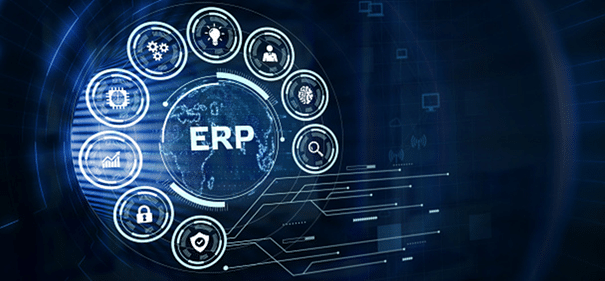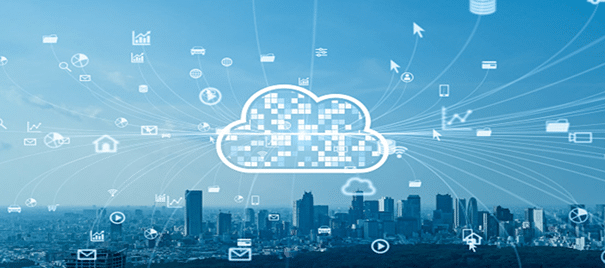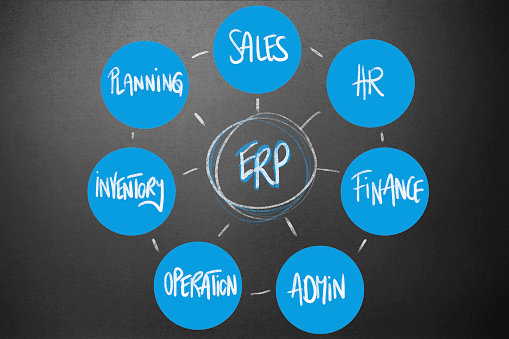Dropshipping: online success in 2023
Découvrir

Since the onset of the pandemic, companies have been looking to accelerate the digitization of their data and operations.
The adoption of ERP in companies is not new, but the digital transformation of companies makes the use of ERP even more necessary than before, and especially in a health context where teleworking is favored.
According to data from US consultancy Gartner, the ERP market will reach $44 billion by 2022, (which is higher than the $39 billion in 2019). This strong revenue growth is due to the way in which the nature of ERP has evolved from a solution to an essentially digital transformation strategy.
By 2023, 100% of large companies looking to create a more responsive approach to ERP consolidation will avoid a single-tier ERP configuration. Executives and managers need to make the right ERP choices across these tiers to drive unconstrained growth and increase profitability, while intelligently reducing risk and cost.
The purpose of this article is to review what ERP is, explain the value to companies and warn of the mistakes to avoid when changing ERP.
An ERP (for Enterprise Resource Planning) is a software solution aimed at unifying a company’s information system by integrating the various functional components around a single database.
In French, this is translated as a PGI to designate a “Progiciel de Gestion Intégré”.
The objective of ERP is to guarantee the uniqueness of the information and its update in real time within the organization.
An ERP is designed to deal with different areas of the company and therefore a multitude of users:
– Production management
– Logistics management
– Transport management
– Accounting management
– Sales management
And many more…
Thus, the different functions of the company will be covered by a specific ERP module that will gather all the data collected in a single database and that will enable all the information to be consolidated.
With ERP, the user interfaces of the various business modules are defined in a similar way and with a strong standardization of the data collected. This allows the ERP to collect and distribute information more quickly and easily internally.
Example: When a company’s salesperson registers a sale, the ERP will apply this sale in real time to the company’s stock, the sales journal, in the accounting entries, etc.
Result: Collaboration between the different functions of the company is possible and therefore becomes a real strategic element for the company !
Each department within a company needs an ERP to manage its activity as well as possible.
These tools are precious for a company. They enable productivity to be measured and improve its sales and marketing strategy. They also facilitate decision-making and limit human error.
Its use can solve problems related to the optimization and rationalization of business management processes. ERP is therefore a tailor-made tool that only works if it meets the company’s needs.

Companies want to optimize the standardization of their data. They need a complete solution (CRM software, finance, financial management or customer relations, sales management, etc.).
The aim is to ensure the reliability of information thanks to automated software. The implementation of a high-performance ERP can therefore make it possible to avoid handwritten data entry tasks, which are generally long and time-consuming.
The aim is to concentrate data in one place without causing confusion and thus save time in the standardisation of data.
ERP upgrades avoid the obsolescence of tools and versions. It ensures better standardisation of data. Employees can communicate the right information at the right time. Thus, thanks to ERP, data is updated in real time.
In addition, ERP allows for better performance at a reasonable price and improves productivity while providing an optimal user experience.

In this last part, we will explain and warn you about the mistakes to avoid when changing your ERP.
The choice of a new ERP will have two main consequences: a transition period and an adaptation period. The transition period consists of removing the original ERP and replacing it with the new one.
The adaptation period, on the other hand, will correspond to the time needed for the new ERP to be deployed and to be fully operational.
Moreover, this change presents a multitude of risks and can, for example, cause data loss, additional project costs or loss of functionality….
– Go round the business lines to list the requirements;
→ The ERP centralized and gathers all the important information to establish the list of requirements, it is essential to think about including all the business requirements in the transformation plan.
– Estimate the time needed;
→ As mentioned above, ERP change is not immediate and automatic.
It takes a certain amount of time which should not be neglected at the risk of losing data
– Integrate hidden costs into the budget;
→ Indeed, it is essential to integrate the hidden costs as this allows you to concentrate your resources on other important projects in the company.
– Get support from an expert;
→ ERP is an investment that can have very high added value if it is adapted and in line with the times. Therefore we recommend that you are accompanied by a specialized expert.
– Take advantage to standardize your data;
→ At YZR, we consider the elements of transition and adaptation in order to provide a service with the aim of saving time and aiming to reduce and minimize the costs associated with data loss. The aim is to guarantee the reliability of the information, thanks to automated software.
Furthermore, we are aware that every department in a company must have its own ERP.
Therefore, before offering an ERP, it is necessary to understand the specific needs of the department in question (e.g. accounting, logistics, transport, etc.) and to concentrate all the data in one place without causing confusion.
Finally, some companies make urgent ERP changes.
Therefore, this practice should be avoided. It is best to communicate with the entire department before implementing the software.
Anticipation and communication are essential to the success of your ERP project. For this reason, we recommend, for example, that you create a set of specifications before you start.
